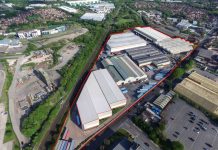According to Avison Young’s latest robotics and automation report, the last five years have seen a substantial increase in the demand for distribution space across the UK, driven by the evolution of the way we live and shop. This structural change has not only caused the amount of take-up activity to increase across the sector year on year but has also driven efficiency in the use of space.
Whilst this robust demand has stimulated development, vacancy rates across core markets have continued to fall. The result of this has been traditionally ‘off-piste’ locations seeing an increase in demand for both design & build and speculative units. This is fuelled by internet retailers looking for low-cost locations with large pools of available labour and associated requirements for some 1,500 people or more on a shift system.
This is likely to continue as the importance placed on ‘last-mile’ delivery will continue to support demand for industrial assets. Logistics requirements are expected to increase in step with the 10% annual increase in online retail sales. Interestingly, the growth in the sector has been set against a backdrop of record employment levels. Since 2012, the number of people in employment has increased steadily across the UK, resulting in the lowest unemployment rates since the mid-1970s. This has created a unique situation and whilst historically distribution warehousing decisions have been made on a purely locational basis, there is now an understanding that access to the appropriate workforce may be just as relevant a factor in decision-making.
To fill this widening labour gap, the logistics sector is seeking support from the latest technologies. The industry is utilising robotics and automation not only as a substitute for workers, but to enable more efficient utilisation of distribution space in order to effectively tackle the growth of e-commerce. This is having a significant impact on building specifications for logistics warehouses. Branded as inflexible by the industry, robotics and automation were once a rarity in logistics. Left fairly unexplored, operators were unsure as to how these new systems could fit into existing spaces and operations. This has changed, with technology now readily embedded into logistics operations and growing at a significant rate. The significant growth of robotics and automation is hardly surprising.
With a diminishing labour pool, combined with significant wage growth and the price of robotics and automation gradually reducing, there is often a financial incentive for operators to invest in new technologies, not to mention the additional benefit that robots can work 24/7 without ever needing to clock off. This report takes a view on how logistics is evolving in the midst of technological change, the effect on its workforce and how this relationship will drive warehouse specification and distribution decisions in the short-medium term.




















